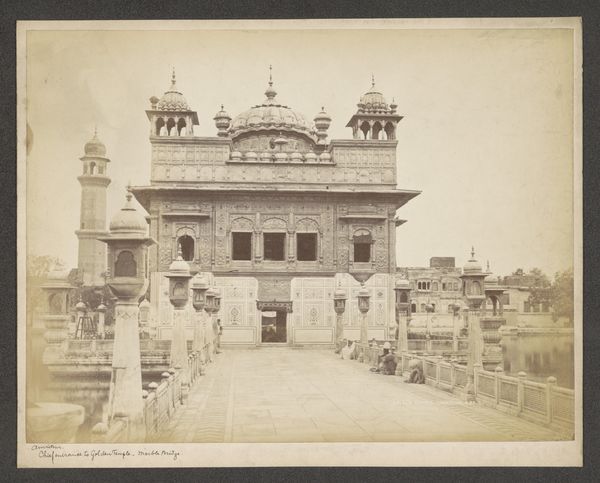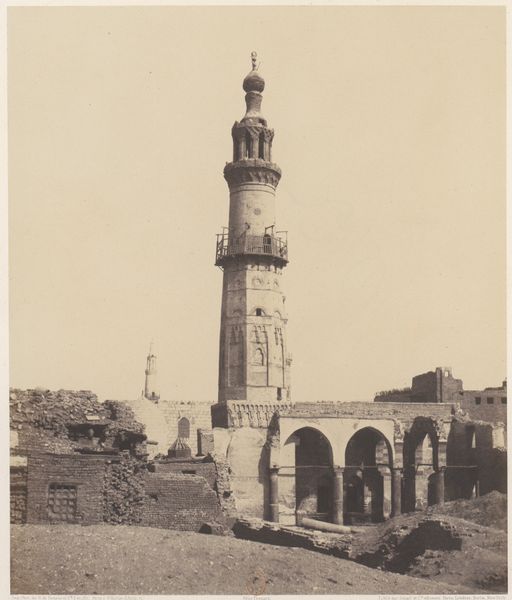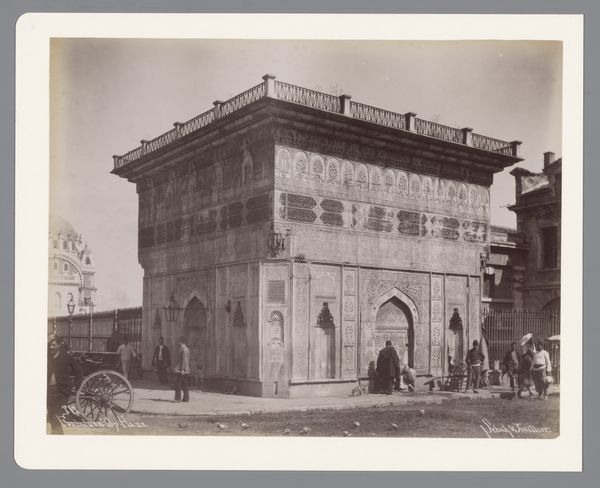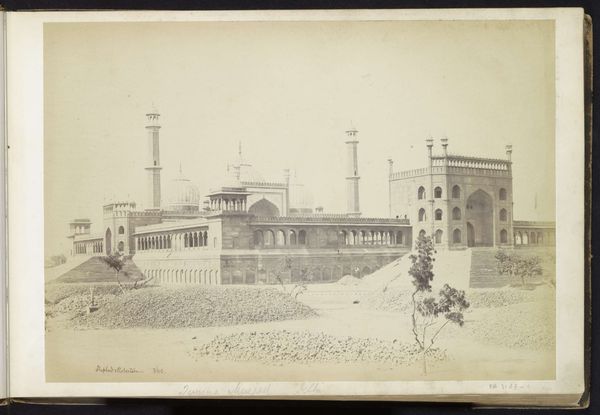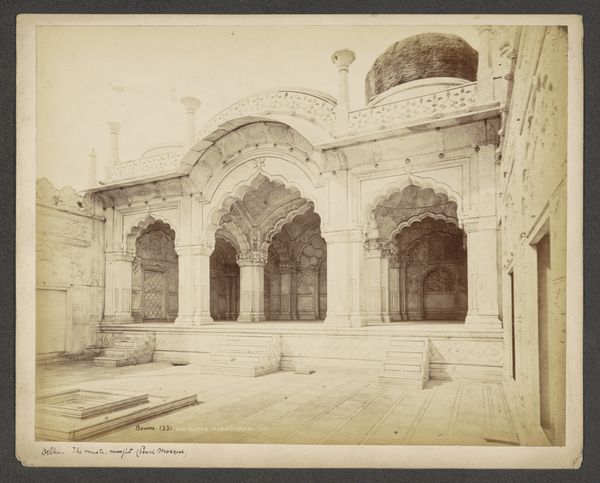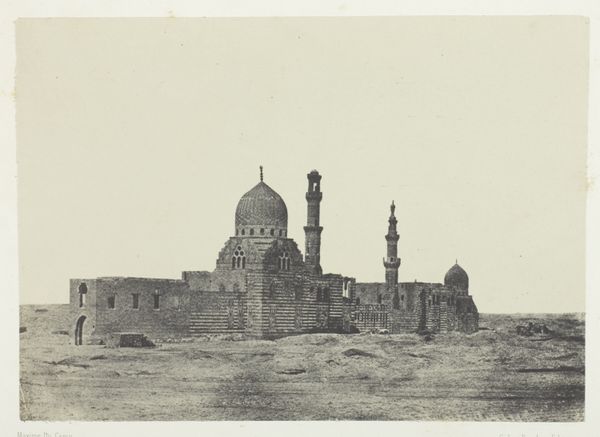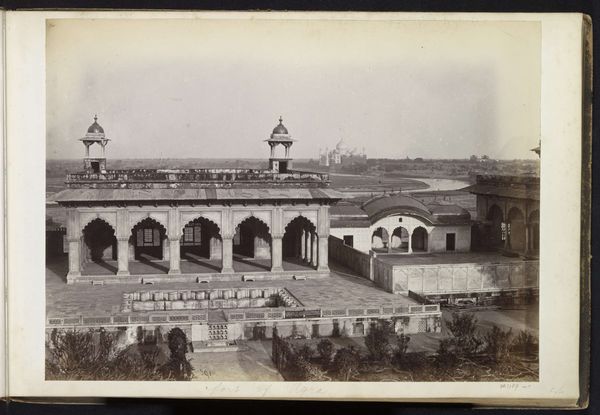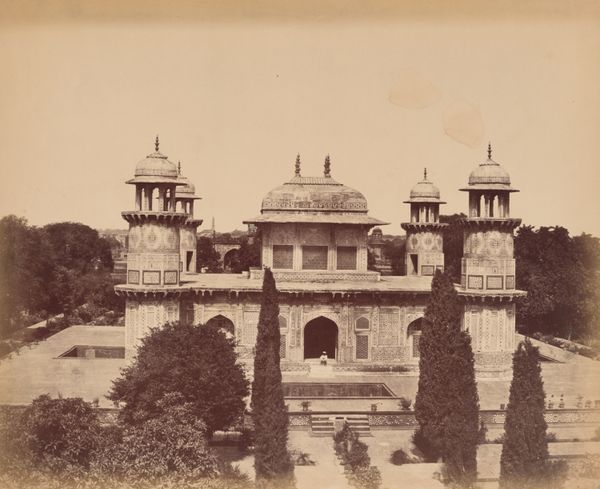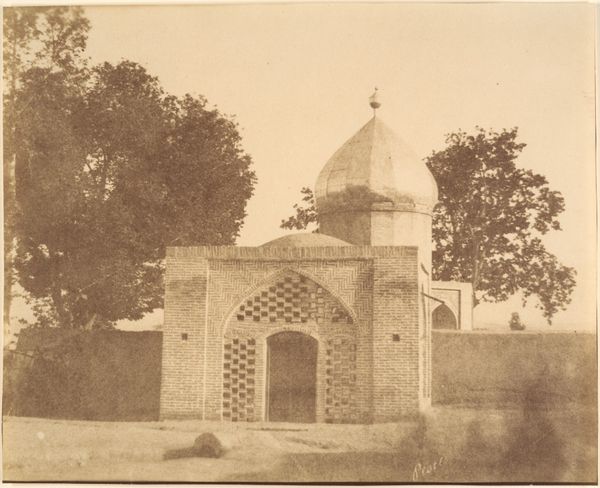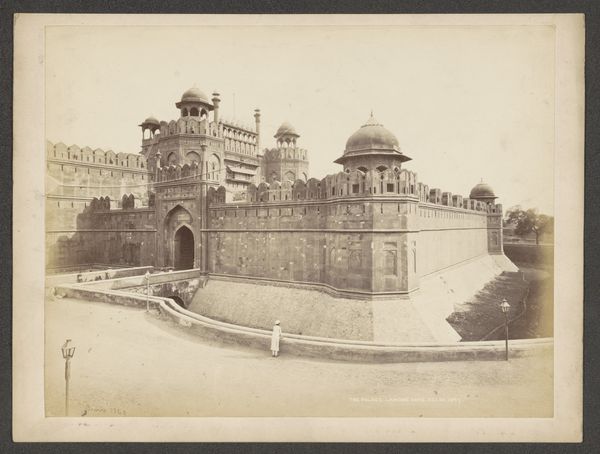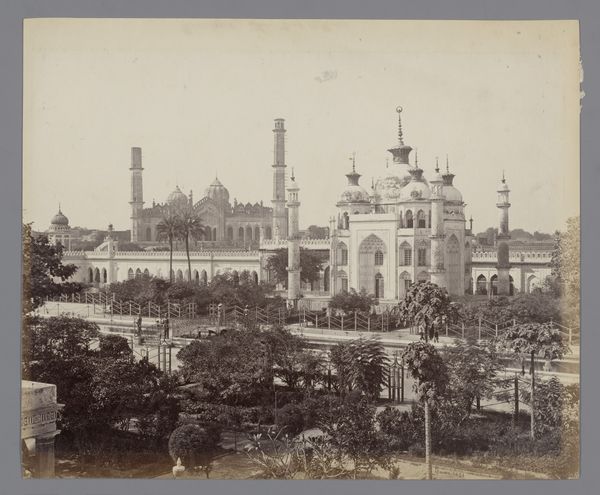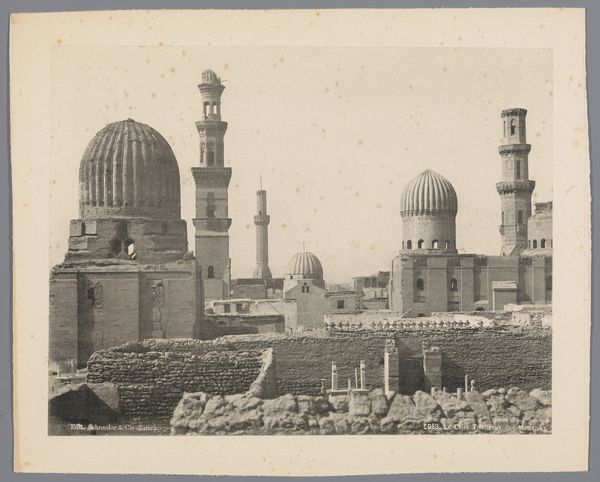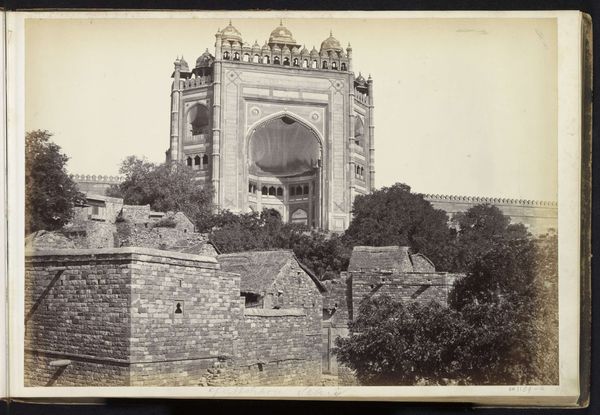
print, photography, architecture
# print
#
sculpture
#
landscape
#
photography
#
ancient-mediterranean
#
cityscape
#
islamic-art
#
architecture
Dimensions: height 273 mm, width 377 mm
Copyright: Rijks Museum: Open Domain
Editor: Here we have "View of Mehtar Mahal in Vijayapura (Bijapur), Karnataka, India," a photograph taken around 1866 by Thomas Biggs. It presents a stately, if somewhat crumbling, architectural structure. What strikes me is the stark materiality; the stone looks almost like it's dissolving back into the earth. What do you make of it? Curator: I see a testament to the labor embedded in the very fabric of this structure. Think of the quarrying, the transporting of the stone, the skilled artisans carving those intricate details. Biggs's photograph captures not just a building, but a frozen moment in a process of both construction and eventual decay, shaped by material and environment over time. Consider the economic forces at play—who commissioned this, who benefited from its creation, and who suffered? Editor: So, you're saying that by focusing on the "stuff" of the photograph, we can learn something about the broader societal structures that shaped its creation and continued existence? Curator: Precisely! It's not just about aesthetic beauty, but about understanding the economic and social relations inscribed in the materials themselves. What kind of labor would have been needed to erect these spherical decorations? The very style speaks to the access and affordability of the materials to those who commissioned it. How does the decline evident in the materials inform its current state of material use and consumption? Editor: I guess I had not initially considered how access to particular building materials dictates architectural choices. Curator: It’s also useful to think about the global context. How does the availability of resources here in India contrast or compare to similar structures being erected elsewhere, say, in Europe or America during the same period? Editor: That gives me a lot to consider - looking at the physical elements as social and economic evidence. Curator: Yes, understanding materiality allows us to unpack layers of history that are often overlooked in purely formal analyses. What can we apply to other works as well?
Comments
No comments
Be the first to comment and join the conversation on the ultimate creative platform.
